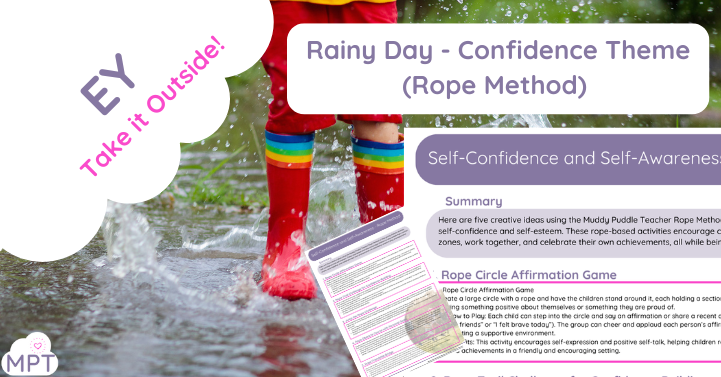Use Spring Art Muddy Tots Ideas pack to get your tot creating, exploring and expressing themselves with natural items.
EYFS minibeasts
Jul 23, 2020
Take Outdoor Learning Minibeasts, outdoors in unique ways that will better support your visual and kinesthetic learners!
EYFS Superhero Day
Jul 23, 2020
Superhero Day EYFS
Outdoor Shape, Space & Measure
Jul 22, 2020
Use 30 Activities Shape, space & measure – to get daily activities outside the muddy way.
Outdoor Comprehension eBook: Easter Owl
Jul 22, 2020
The Easter Owl – eBook – EYFS – Ages 4-5
Outdoor Writing Focus Group Work
Jul 22, 2020
Use Writing Focus Group Tasks to get those ideas and imaginations flowing!
Outdoor Spring Art
Jul 22, 2020
Use Spring Art Muddy Tots Ideas pack to get your tot creating, exploring and expressing themselves with natural items.
EYFS Wild Things
Jul 22, 2020
Use Wild Things EYFS to take the tigers within you outside in a place to roam and roar!
EYFS The Gingerbread Man
Jul 22, 2020
EYFS The Gingerbread Man
Phonics Games All Phases
Jul 22, 2020
Use this incredible pack of phonics games to add variety, fresh air and imagination to your sessions. Use it as an aid when planning so you can pick and choose the activities you want to implement into your own sessions.
Muddy Spellings
Jul 22, 2020
Have you ever noticed the children can do the spellings on the day of their test but do not put them into their writing? Children need context and they need to be engaged.
EYFS Making Friends
Jul 22, 2020
Why not try Outdoor Learning P4C using nature to inspire you and help generate deep meaningful conversations and connections.
30 KS1 Outdoor Activities
Jul 22, 2020
Use 30 Muddy Infants Activities to get your infant outside doing all the things kids should be doing and making memories.
Counting in 10’s and 5’s EBook
Jul 22, 2020
Use Board Game Counting in 10s & 5s and have fun while using mastery to practice counting. Go outside with a device and all you need to take is a dice!
EYFS P4C
Jul 22, 2020
Outdoor Learning P4C EYFS | Muddy English
Babies Pirates Ideas pack
Jul 22, 2020
Do you have a pirate topic planned and want to take some of the learning outside? Use Pirates EYFS Ideas Pack to get ideas for your planning. Let us help you save time and get your learning outside at your leisure in any weather.
*FREE*Early Years outdoors mermaids ideas pack
Jul 22, 2020
Is mermaids a topic you are covering? Mermaids EYFS ideas pack will give you lots of muddy and messy ideas to get the EYFS curriculum outdoors. Includes arts and crafts, active games and lost of cross-curricula links.
Early Years Outdoors Unicorns
Jul 22, 2020
Why not take unicorns outside using only natural resources? Use this Unicorns EYFS activity pack to make your topic even more memorable, cross-curricula and magical.
New In

10 Outdoor Sensory Activities for Babies

Outdoor Continuous Provision Plan for Early Years: “Ourselves” Theme

Outdoor Continuous Provision Plan for Early Years: Rainy Day Activities

Outdoor Continuous Provision Plan for Early Years: Water Theme

Dinosaur Continuous Provision Plan (Early Years Outdoors)

Rainy Day Ideas Early Years – Confidence Theme (Rope Method)

Self-Confidence and Self-Awareness (Early Years) Rope Method

Rainy Day Activities Early Years (Friends Theme)

Making Relationships EYFS (Rope Method)




















